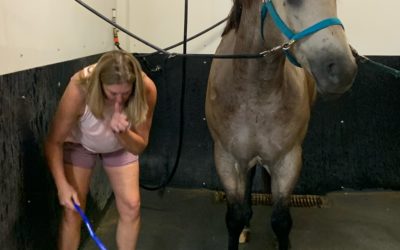How the high “S” works with . . .
High D:
During stressful times and conflict the High “S” might:
- View the High ”D” as argumentative, dictatorial, arrogant, domineering, nervous, and hasty
- Be intimidated by the “D”s confrontational approach
- Not get angry, but will get even
- Withdraw and slow down the action
To Have An Effective Relationship:
- Must have direct communication; deal with issues in a straightforward manner; negotiate commitments and goals on an equal basis
High I:
During stressful times and conflict the High “S” might:
- View the High “I” as egocentric, superficial, overly optimistic, glib, too self-assured, and inattentive
- On the surface, the relationship will look good
- Slow down the action and pace of High “I”
- High “S” protects his/her position
- Avoid taking a stand and confronting
To Have An Effective Relationship:
- Be friendly, complimentary, listen to ideas, and recognize High “I”s accomplishments
High S:
During stressful times and conflict the High “S” might:
- View another High “S” as dependable, self-controlled, patient, kind, accommodating, and attentive
- Be supportive to each other, but little will be accomplished
- Avoid confrontation and seldom disagree openly
- Set goals by external means to accomplish results
To Have An Effective Relationship:
- Move at a steady pace; express appreciation; establish a friendship with another High “S”
High C:
During stressful times and conflict the High “S” might:
- View the High “C” as overly dependent, evasive, defensive, too focused on details, and too cautious
- Be similar to the High “C” – does not hurry & is passive
- Be both reluctant to make decisions
- Translate the High “C” coolness as personal rejection
- Push to build a relationship
To Have An Effective Relationship:
- Present facts clearly and be well prepared for discussion. Remove any potential threats. Expect High “C” to express doubts and give them time to evaluate data before making a decision.
If you have not previously taken the DISC assessment or do not know your DiSC Personality Profile, you can take the assessment online at https://peoplekeys.com/

MICHELE BURCH REID, MS FOUNDER OF LCI
More From Michele
Extraverted Sensing (SE)
Extraverted Sensing (SE) ESTP - ESFP"What IS" The function when we are focusing our attention on the real and present world, using our 5 senses. For example:Listening to a dog bark. When our brain focuses on the sound of the dog barking, it is exercising...
Eight Cognitive Functions of the MBTI
The 16 MBTI types can be simplified into 8 Cognitive Functions Important to remember: Everyone uses all 8 functions Our type determines our ability to use each function 2 will serve as our strengths 2 will serve as our weakness or blind spots The remaining 4 are our...
Importance of Non-Verbal Communication
The other day while I was grooming my horse, it hit me how important non-verbal communication is. In the words of Keith Whitley, There is so much that is being said “when you say nothing at all”. There is so much trust, loyalty, vulnerability, and even communication...





